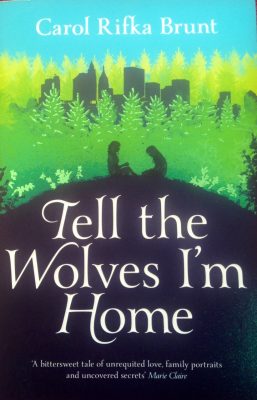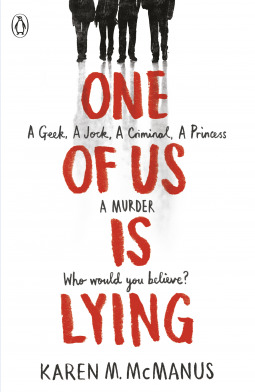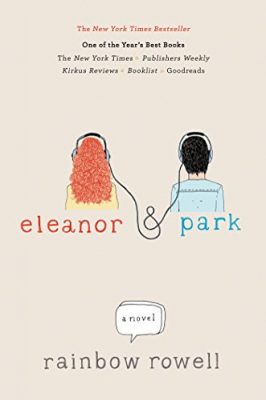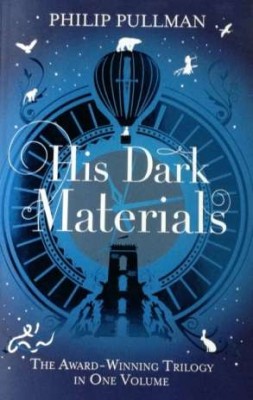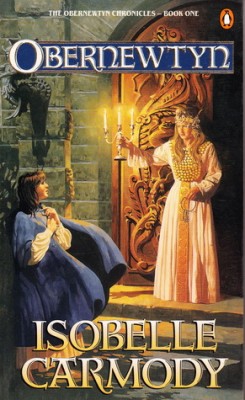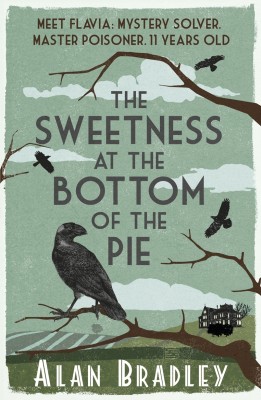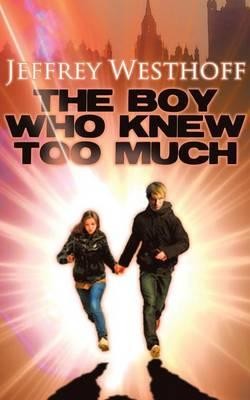In the mid-80s, in New York, a man is dying of AIDS. To most of the world he’s a famous artist, but to our fourteen-year-old heroine June, he’s her beloved uncle Finn. Before he dies, Finn paints once last painting, a portrait of June and her sister Greta; being the perfectionist that he is, he dies still dissatisfied with it. Then, at his funeral, June sees a strange man outside watching her and Greta.
Continue reading Tell the Wolves I’m Home
At a high school in Southern California, five students are gathering for detention. They appear to fit into familiar categories: the loner geek; the honours student; the sports star; the pampered princess; the budding criminal. A noise draws them to the window: a car accident in the parking lot. When they turn back around, something has changed in the room which means that only four of them will leave it alive.
Continue reading One of us is Lying
Returning to live with her mother and siblings after a mysterious absence, Eleanor’s first day at her new school begins inauspiciously, when no one will let her sit next to them on the bus. Eventually, Park takes pity on her, and over a series of bus trips they gradually develop a friendship that turns into a romance. But Eleanor’s home life is less than idyllic, and forces beyond their control are building that will threaten to topple their fragile happiness.
Continue reading Eleanor and Park
Maybe you recall, coming up for ten years ago, the film version of the first book in this series, Northern Lights? Except the movie was called The Golden Compass, after the American version of the book, because Americans fall into a funk of existential dread if they don’t get to name everything themselves. It starred Nicole Kidman and Daniel Craig? Yeah, don’t watch that. It was made when steampunk was still a thing. It has the worst child acting I think I’ve ever seen, and I was in a community theatre production of Annie. But the books. The books are…well.
Continue reading His Dark Materials
Twenty-six years after she began, Isobelle Carmody has published the final novel in this series. There are only seven books altogether, meaning she averaged almost four years per book, which, for something that was clearly not proof-read or subjected to any editorial process, is frankly unforgivable.
These books are exactly as bad as you think they are. The writing is clunky, the plot meandering, and the action is littered with unnecessary red herrings that fail to be resolved satisfactorily. And yet. Having started reading these novels at the tender age of I don’t really remember but probably like 14 or so, I can finally, FINALLY, put to death the part of myself that still cares about the characters that inhabit this fantasy universe.
Continue reading The Obernewtyn Chronicles
“Heaven must be a place where the library is open twenty-four hours a day, seven days a week.”
So speaks Flavia de Luce, a heroine after mine own heart: chemist; amateur sleuth; expert in poisons both rare and bog-standard; eleven-year-old girl. Flavia’s world is turned upside-down when she wanders into the garden one evening in 1950 and discovers something most unpleasant in the cucumber patch.
Continue reading The Sweetness at the Bottom of the Pie
A YA spy caper centred around an American teenager on a European school trip. (Question: do American public high schools go on European trips? I’ve only ever heard of private schools doing it. And the main character’s family seems too working-class to have paid for it themselves. Whatever, it’s transparently a pretext to get the parents out of the way.) Nothing in this novel is remotely credible – unlike, I guess, the entire Fleming oeuvre? For some reason it’s more noticeable when the protagonist is into comic books and has never been kissed – but the events all tumble into each other in the usual inexorable way of the genre, so if you give the setup the benefit of the doubt, the rest of it follows. Continue reading The Boy Who Knew Too Much
In a perpetually foggy northern American town, a school is plagued by a mysterious illness that sees its teenage girls fall down, froth at the mouth, and undergo convulsions and seizures. It would sound like your standard YA horror lite, or like someone should be accusing Goody Proctor of speaking with the devil, if it weren’t for the fact that it’s based on actual events that took place in a town in New York state only a year or two ago. (I’m also not sure whether it’s supposed to be YA or not; if so, it’s a bit more nuanced than I recall my teen novels being.) Continue reading The Fever
This is an unsettling little book that resists categorization. I guess…coming-of-age suspense novel with witchy undertones? The protagonist, Merricat, lives in her family’s ancestral home with her sister and her uncle. It’s clear that someone in the family is a murderer, but no one in the family seems uneasy about that prospect. Things come to a head when an external force comes into the house. It’s kind of like that other castle novel, I Capture the Castle by Dodie Smith, except that as well as delightful, it’s also kind of creepy.
Fun fact: when Shirley Jackson’s first story, The Lottery, appeared in the New Yorker in 1948, she received so much hate mail in response that the local postmaster stopped speaking to her; thus possibly proving that Twitter didn’t create jerks, just enable them.
